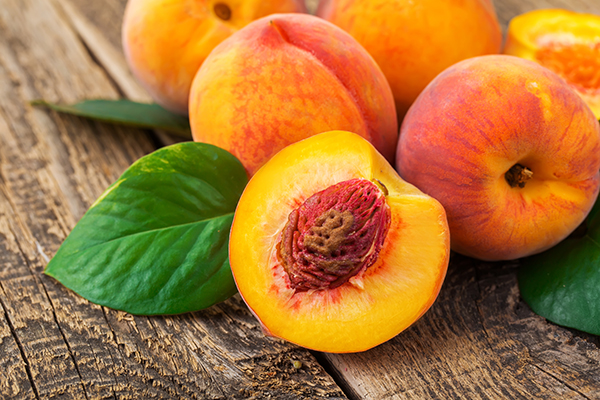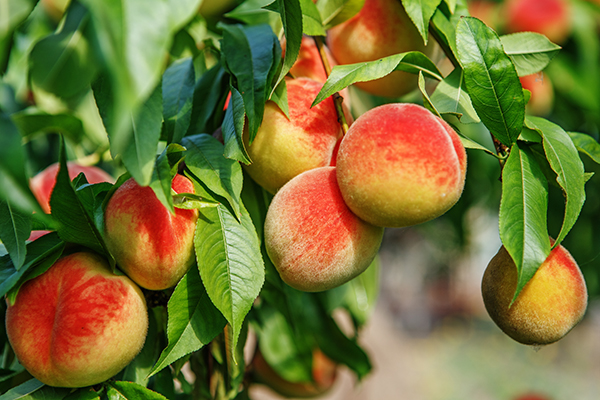The peach and its benefits
With its velvety skin, fleshy pulp and a flavour that drifts between acidity and sweetness, the peach is an indispensable fruit during the summer months. The harvesting season stretches from May to September, although there are some earlier varieties, and some later ones that reach ripeness in October.
fresh food
Share

Originating from China where they are a symbol of longevity, the peach belongs to the rosaceae family, to which other summer fruits belong, such as the plum, the nectarine and the apricot. This fruit is characterised by its unique seed, which is found at its centre and surrounded by a hard shell: the stone.
Varieties
It can be classified into 3 large groups: with white pulp, with yellow pulp and the nectarine type. The red peach is picked at the start of the season and has a more acidic flavour, while the yellow one is picked around July and is easily recognised both by its colour and its flavour, which is slightly sweeter.

Propiedades
- Diuretic: contains 87% water.
- Filling: a source of natural fibre.
- Low calorific content.
It is very easy to eat fresh (with skin or without) and can be used in desserts or as an ingredient for salads, skewers or juices. Additionally, it can be used in other food preparations: in jams, dried, or in syrup.
To store them for longer, it is recommended to keep them in the least cold part of the fridge, and separate from other fruit.
Nutritional content (per 100 grams)
- Energy: 34,0 kcal
- Fats: 0,1 g
- of which saturates: 0,0 g
- Carbohydrates: 7,8 g
- of which sugars: 7,8 g
- Fibre: 2,0 g
- Protein: 0,5 g
- Salt: 0,0 g






